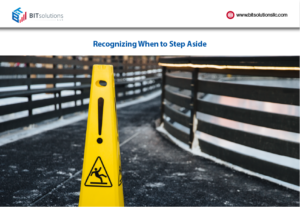You have a list of possible leads. You have enough information collected to start actively working on the capture management process. What’s next? Relationship building is the next big chapter in your capture management success. You have to understand what makes your customer tick.
The bidder with the most information wins, so make sure to position yourself as the most knowledgeable.
Build a Complete Customer Profile
A customer profile shows you everything you need to know about a customer.
- What do they want? What do they like? What can they afford?
- What are their requirements? Are they open to new ideas and products?
- Do they have any hot buttons you should know about or avoid?
In addition to client-specific information, you also need to look at government contracts as a whole. Learn everything you can about how government contracts work. Take a look at the small business definitions. Determine your NAICS code(s). The North American Industry Classification System quantifies business products and industries using codes, and only certain codes may be eligible to bid on specific jobs.
Educate Yourself About Government Contracting
The government is like no other client you have ever worked with. Their requirements are often highly specific, but they also offer a fair amount of information — if you know where to look. Before you make your first phone call or schedule a meeting, do some agency-specific research.
Every government agency publishes information about their organization and budgets. You can take a look at these strategic documents on the Office of Management and Budget website. From there, you need to remember the dos and don’ts of government contracting. With all of that in mind, you can make contact.
Talk to the customer. Ask lots of questions. As you get to know the customer, you will get a better understanding of their likes and dislikes. It’s good to follow the leadership to every speaking engagement, read up on current events that might impact the agency, research new management hires, policy changes or other news that could impact what the agency is looking for, and understand their organizational needs, budgetary support, integration with other agencies, etc.
Remember the Government Contracting Officer
The Contracting Officers (KO’s), are not your customer, but they are the person who signs off on the deal. You always want to include them in the conversation. Selling to the customer only to get held up by the Contracting Officer is not the way to manage a successful capture. Many changes to the RFP can be made by working with the KO and showing them different options that might help them (and of course, be better for your company as well).
Identify and Include the Funding Source
Where the money is coming from can also impact your eventual success. As the old adage goes, “who controls the money has a say in how it is spent”. Is the contract for a federal, state or local government agency? Which agency has ultimate oversight on spending for this contract? The agency funding the contract may have some guidelines specific to their contractors.
Also, not all funding is available immediately. By contacting the funding source, you may glean information about prospective start dates and payment schedules. The more information you have, the more you can shape the deal to balance your company’s needs with the needs of the customer.
Take Advantage of Educational Meetings and Industry Days
During the capture process, many agencies will set up meetings and industry days to explain the opportunity. During such events, agency representatives detail what they expect out of the contract and what they are looking for. These meetings are important because they are an opportunity to see the competition, begin setting up team mates and meet the customer face to face. You have a long laundry list of questions, and many of them might be answered at one of these events.
Build a Relationship
Take every opportunity to meet with all of the different segments and personnel of the government. You can never overestimate the importance of face time. The better you get to know the customer, the more you can anticipate their needs. If they know you, they might be more likely to reach out with questions on their end. Ultimately, building a relationship allows you to improve your odds of landing the contract.




